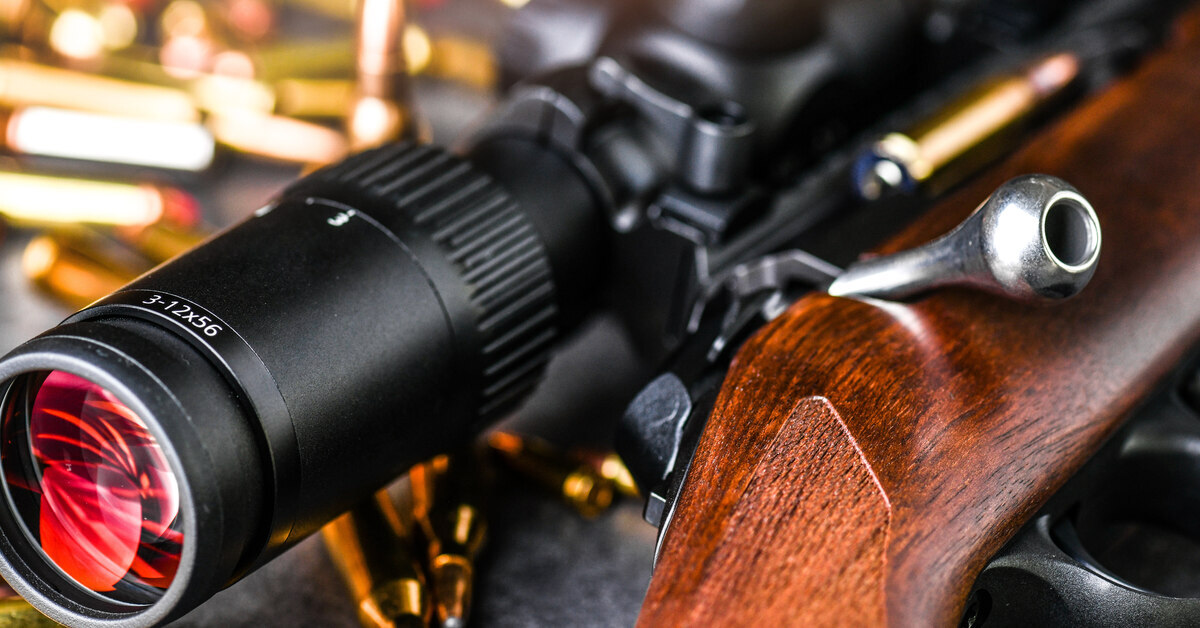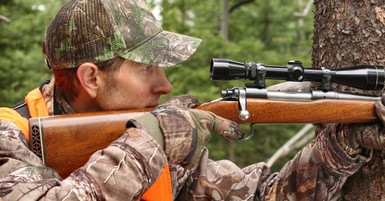Posted by Admin on Mar 26th 2025
How To Choose the Right Rifle Scope for You
Selecting the right rifle scope can make all the difference in the field or at the range. The ideal scope enhances your accuracy and aligns with your shooting style and environment.
With so many options on the market, it can overwhelm many who aren’t familiar with the particulars of the equipment. In our guide below, we’ll explain how to choose the right rifle scope for you and your firearm, breaking down key factors such as magnification, objective lens size, eye relief, and more.
Introduction to Rifle Scopes
First, let’s familiarize ourselves with the basics of rifle scopes. They’ve come a long way from their origins as basic aiming devices and now feature innovative technology that boosts precision and the shooting experience significantly. With lenses and internal adjustments, scopes bring targets into sharp focus and help align your shots with accuracy.
Choosing the right scope is about finding one that fits your specific needs. Consider the type of shooting, your skill level, and the environments you’ll face. A good place to start is understanding the core elements of all scopes: magnification and the objective lens.
Understanding Magnification and Objective Lens Size
Magnification is a critical feature of a rifle scope as it determines how much closer your target will appear. Scopes feature labels with numbers such as 3-9x40.
The “3-9x” indicates the magnification range, meaning the scope can zoom in from 3 times to 9 times magnification. The number “40” refers to the diameter of the objective lens in millimeters.
Choosing the Right Magnification
Higher magnification is ideal for long-range shooting but can make it harder to quickly acquire targets. For instance, hunters in dense woods often prefer low magnification (1-4x) for easier target tracking, while those shooting across wide, open fields may need something in the 9-14x range. Always consider your shooting environment when selecting magnification power.
The Role of the Objective Lens
The size of the objective lens determines how much light the scope gathers. Larger lenses allow more light in, resulting in a brighter image, especially in low-light conditions, such as at dawn or dusk. However, bigger lenses also add weight and bulk to your rifle, so finding a balance between brightness and portability is key.

Explaining Eye Relief and Exit Pupil
Another key consideration when picking scopes is the eye relief and exit pupil. Eye relief is the gap between the eye and the scope’s eyepiece with a full field of view. Your scope must provide sufficient eye relief—particularly if your rifle has heavy recoil—to avoid the dreaded “scope bite.” Most modern scopes offer eye relief ranging from 3 to 4 inches, which is sufficient for most caliber rifles.
The exit pupil refers to the amount of light that exits the scope, measured in millimeters, and directly impacts image brightness. You can calculate the exit pupil by dividing the objective lens diameter by the magnification. For example, a 40mm lens at 8x magnification yields a 5mm exit pupil. Larger exit pupils are best for low-light settings, enhancing visibility and target clarity.
Turrets and Adjustments: MOA vs. MRAD
No rifle scope is complete without adjustable turrets that allow you to fine-tune your aim. These turrets control elevation (up and down adjustments) and windage (side-to-side adjustments). The measurement system you choose—MOA (Minute of Angle) or MRAD (Milliradian)—is a key factor in your rifle scope decision.
Understanding MOA
MOA is a unit of angular measurement common in shooting and sighting systems. One MOA equates to approximately 1.047 inches at 100 yards, typically rounded to one inch for simplicity. For hunters and rifle owners, MOA offers a straightforward system for making precision adjustments.
Most scopes with MOA measurements have turrets that adjust in increments of ¼ MOA, meaning each click shifts the point of impact by approximately 0.25 inches at 100 yards. This clarity makes MOA appealing to those who shoot at shorter to mid-range distances. Adjustments expand as the target distance increases, requiring users to calculate accordingly for consistent accuracy.
Understanding MRAD
MRAD is another angular measurement system popular among long-range shooters but based on the metric system. One MRAD corresponds to 1/1000th of a radian, which translates to 10 centimeters at 100 meters. For rifle owners who prefer metric calculations, MRAD scopes are more intuitive.
Typically, turret adjustments in MRAD scopes are in 0.1 MRAD increments, which equates to a shift of 1 centimeter at 100 meters. This precision makes MRAD especially effective for longer-range adjustments where pinpoint accuracy is critical. MRAD scales are also linear, meaning calculations and adjustments stay proportional regardless of range, making it a versatile option for sharpshooters.
Reticle Types and Their Uses
Another consideration when shopping for a new scope is the reticle or crosshair design. These designs can vary widely depending on the scope and intended use. Common types include:
- Duplex Reticle: The most versatile option, ideal for general-purpose shooting.
- Mil-Dot Reticle: Best for long-range shooters who require precise distance calculations and holdover points.
- Bullet Drop Compensator (BDC) Reticle: Perfect for hunters and those who need quick compensation for bullet drops at various distances.
Consider the complexity of your shooting requirements and your level of experience to choose the ideal reticle for your scope.

First Focal Plane vs. Second Focal Plane
Rifle owners must also judge whether to choose a first focal plane (FFP) or second focal plane (SFP) scope. This distinction determines how the reticle behaves as you adjust magnification.
An FFP scope adjusts the reticle size proportionally with magnification, maintaining consistent holdover values. This makes it ideal for long-range precision shooting. An SFP scope keeps the reticle size constant, which can make it easier to aim at lower magnifications. SFP scopes are more common for hunters and beginners.
Choosing the Right Scope for Your Specific Needs
To choose the right rifle scope for you, hunters must consider all these technological factors of scopes and their specific hunting needs. For example, hunters pursuing fast-moving games in thick cover will need very different features than a competitive long-range shooter. Here are some considerations to guide your choice:
- Hunting: Opt for low to mid-range magnifications with lightweight construction for portability.
- Tactical Shooting: Consider scopes with illuminated reticles and higher durability for challenging conditions.
- Target Shooting: Look for precise turrets, high-quality optics, and a wide magnification range.
Being realistic about your needs will prevent you from overspending on features you may never use.
Find High-Quality Rifle Scopes at Yeager’s Sporting Goods
The process of selecting a rifle scope may seem daunting at first, but it becomes much simpler when you understand the basics. By considering magnification, reticle type, and your budget, you can confidently choose the scope that best matches your shooting needs.
To find high-quality scopes along with other premium hunting gear and supplies, Yeager’s Sporting Goods is the place to go! Whether you’re an experienced hunter or a beginner, we have a wide selection of equipment to choose from and an expert staff to help you find what’s best for you. Browse our inventory online or stop by our store in Bellingham, WA, today.

